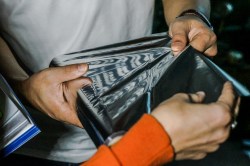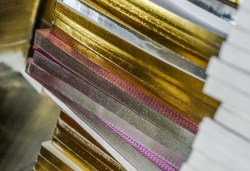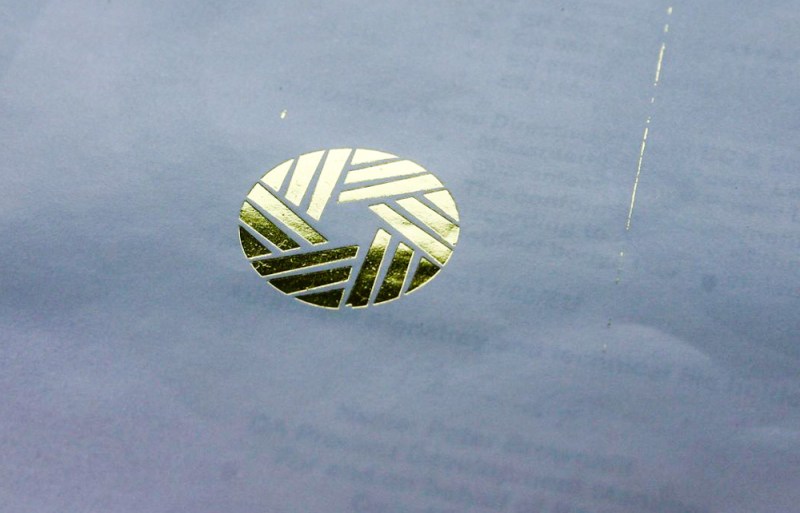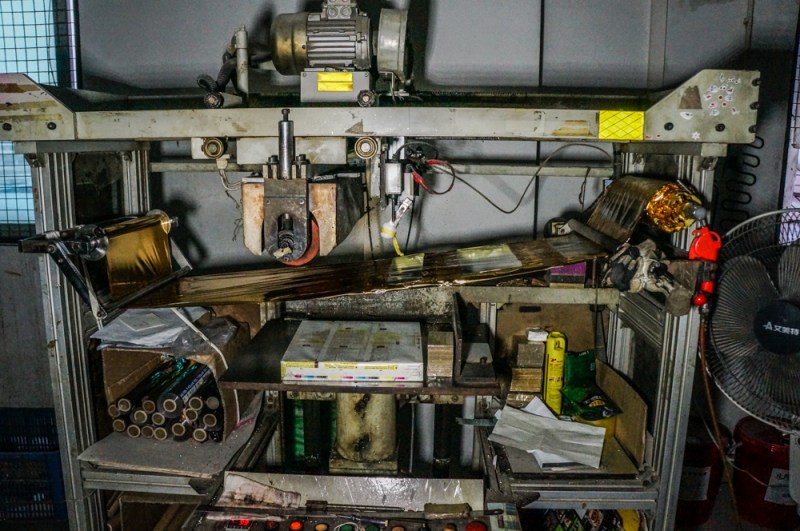Hot foil stamping is a method often used to embellish and emboss premium print media. It’s used on things like letterhead and wedding invitations to add a touch of luxury. The operation is actually quite simple, where a custom die is heated, pressed into a heat transfer foil, and then transferred on to the print media. Some of the very first manuscripts used gold leaf embossing to decorate intricate calligraphy. You can also see it often used to decorate the sides of religious texts.
Professional foil stamping machines are often pricey and the cheaper ones you can get from eBay are usually poorly made. [Lindsay Wilson] found this out when he purchased a low-cost hot foil stamping machine that was too difficult to use reliably. It got shelved for years until he had another hot foil stamping project. This time he was prepared. He took the machine apart and robust-ified it by attaching it to a heavy-duty arbor press. He also retrofit the heating assembly with his own temperature controller to improve the accuracy for the foils he wanted to use.
 We’ve actually gotten this done professionally at a book printing factory in Shenzhen and took some photos. This is the heat transfer foil. You can usually get these on huge rolls that mount on to the machine. They also come in various metallic colors such as metallic blue, green, red, as well as the usual gold and silver.
We’ve actually gotten this done professionally at a book printing factory in Shenzhen and took some photos. This is the heat transfer foil. You can usually get these on huge rolls that mount on to the machine. They also come in various metallic colors such as metallic blue, green, red, as well as the usual gold and silver.
This is the actual machine used to hot foil stamp on to books. It’s also used to stamp the edges of the books to make it look more appealing at book stores.
 This is an example of how hot foil stamping can decorate books. In this case, it’s used to decorate the edges of the books which makes it more eye-catching, especially when there’s a stack of them sitting on a table at a book store. It also reminds me of the bibles I always see in the drawers of the hotels I’ve stayed at.
This is an example of how hot foil stamping can decorate books. In this case, it’s used to decorate the edges of the books which makes it more eye-catching, especially when there’s a stack of them sitting on a table at a book store. It also reminds me of the bibles I always see in the drawers of the hotels I’ve stayed at.
Now we’re just waiting for a conductive heat transfer foil so we can stamp out our circuits on to book covers.
















How’s the glue hold up to the heat of soldering?
Same way it does in normal PCBs
Custom PCB dies 4tehWin
Very informative and extremely well written.
I’m eagerly looking for your upcoming articles, if not here, then elsewhere.
Found Christopher Wang’s mom, everyone.
She’s very supportive.
Maybe or the redundant dept of redundancies. Those last four paragraphs are impressively impressive.
Now we know one of the reasons more people don’t write for Hackaday.
What is the foil made from? Could it be plated to make it thicker?
Could a laser be used to heat the foil?
I see this is his first post here, so not trying to beat up the new guy too bad, but this post is kind of a shambles. Seems the editors could have given a bit more guidance.
The post starts by linking to a project Lindsay put up, and then within a few paragraphs has changed to being written in the first person about a trip to Shenzhen by the author? It’s honestly very confusing, like two different articles were merged together or something.
I edited this one. Yeah, it kind of falls between our usual daily blogpost and original content styles.
But the alternative was to leave out [akiba] / Chris’ experience getting books printed in Shenzhen. That would have been a pity, no?
So we’ve got a hybrid post/article. Sorry for the confusion. Or you’re welcome. Whichever.
So you’ve got someone who knows how to write, right out of the chute, and his article is light-years ahead of what’s becoming standard fare here: a 100-word, or less, no-information Post-It note telling the reader to “…watch the video after the break…”. And you’re apologizing?
As I said earlier: “Now we know
one ofthe reasonsmore people don’t write for Hackaday.”A hybrid post/article? Does that make it a particle, or a posticle?
The next step would be to make a printer that does this. Apparently there were thousands of old books that had these prints on them and not many people know they are there.
http://twistedsifter.files.wordpress.com/2013/09/hidden-artworks-on-the-edges-of-books-gif.jpg?w=640&h=409
Wow